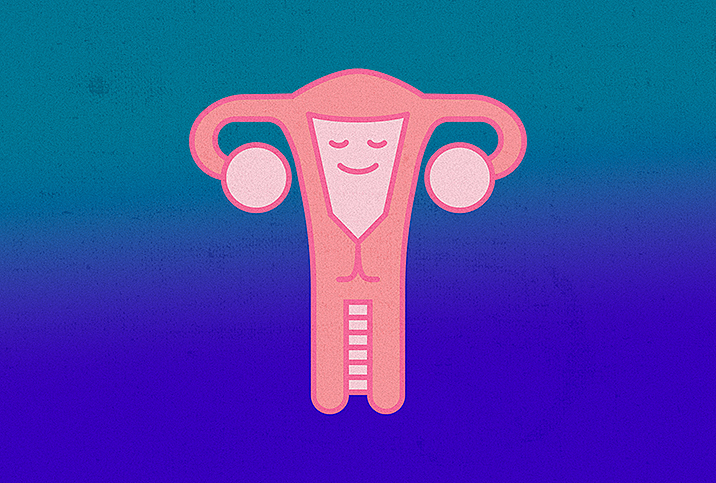What Is Endometriosis Staging?

Endometriosis is a common gynecological condition that affects an estimated 1 in 10 women worldwide, so chances are you probably know someone who has it. This chronic illness involves tissue similar to the lining of the uterus (endometrium) growing elsewhere in the body, such as on the ovaries or fallopian tubes.
While most symptoms are often associated with your menstrual cycle, the condition can result in a wide variety of other symptoms, such as abnormal and painful bowel movements or passing blood in your urine. Like many conditions, endometriosis can have different stages. But what do these stages mean and how are they treated?
The stages of endometriosis
While there are a few different ways you can assess the stage of endometriosis you have, the most commonly used scale has been designed by the American Society of Reproductive Medicine (ASRM) and classifies the condition into one of four stages:
- Stage I: Minimal endometriosis with a few small implants, wounds or lesions. These can be found in your pelvis, abdomen or on other organs. There's not much scar tissue or none at all.
- Stage II: Mild endometriosis with slightly more implants. These may be deeper in the tissue. There may be more scar tissue.
- Stage III: Moderate endometriosis with deeper implants. You may also find cysts on your ovaries and extensive scar tissue resulting in adhesions.
- Stage IV: Severe endometriosis that may be widespread. You may have several deep implants and adhesions, as well as large cysts on your ovaries.
Being told that you have an advanced stage of any condition can feel overwhelming, but being diagnosed with a later stage of endometriosis doesn't necessarily mean you'll have worse symptoms.
"Endometriosis is a complex disease. It doesn't behave in the exact same manner in every patient," said Vasileios Minas, Ph.D., M.R.C.O.G., an OB-GYN and endometriosis specialist at Ashford and St. Peter's Hospitals in Surrey, United Kingdom. "Every woman is different, and endometriosis sufferers may have similar or different symptoms irrespective of the stage of their disease. Therefore, clinicians must ensure that their patients understand that the stage of endometriosis doesn't necessarily correspond with the severity of their symptoms."
How is endometriosis diagnosed?
On average, it takes around eight years from the first onset of symptoms to an official diagnosis of endometriosis. Although technology constantly develops and may improve the diagnosis of endometriosis by ultrasound or magnetic resonance imaging (MRI) in the future, the reality at present is that endometriosis cannot always be seen by imaging. Sometimes multiple tests, including laparoscopic (keyhole) surgery, are required to diagnose it.
"The diagnosis of endometriosis is based on obtaining a careful clinical history from our patient," Minas said. "We ask about specific symptoms that we know are often associated with endometriosis. This is followed by a clinical examination, which often includes an internal vaginal examination. Then imagining takes place, which is usually an internal ultrasound of the pelvis. On some occasions, an MRI is also done.
"However, despite our best efforts, accurate diagnosis and, particularly, staging of endometriosis requires a laparoscopy under general anesthetic," Minas continued. "Other examinations which may be performed at the time of or before the laparoscopy may include a cystoscopy, which is a telescope in the bladder. This is if we feel that endometriosis may be infiltrating the bladder wall. And sometimes we do a telescope in the back passage, which is called a sigmoidoscopy. This is done in cases where we believe the endometriosis may be deeply affecting the bowel wall."
In rare cases, an MRI or a CT (computed tomography) scan may occur after diagnosis during keyhole surgery. Does that mean you have to have surgery to get a diagnosis or a clearer idea of what stage of endometriosis you may have?
"You don't always have to have surgery for a diagnosis. For the higher stages or more extensive endometriosis, in particular, deeply infiltrating endometriosis, this can be diagnosed on an MRI," Minas explained. "Ultrasounds are especially good at diagnosing deep endometriosis of the ovaries, which is what we call endometrioma or endometriotic cysts of the ovaries. These are visible on both ultrasounds and MRIs.
"However, some forms of endometriosis, including superficial endometriosis, cannot be diagnosed on an ultrasound or MRI, and for this a laparoscopy is required," Minas said.
How is endometriosis treated?
A number of treatment options for endometriosis are available. Advice for treatment takes into consideration the stage of your endometriosis as well as your symptoms.
"Typically, if the pain is the main issue, then medical treatment is offered," said Tara Scott, M.D., an OB-GYN and medical director at Summa Health in Akron, Ohio. "Oral contraceptives are usually offered first, but according to a recent review, they do not really help with the pain. A progestin-only pill has a better chance of helping the pain.
"Surgical treatment is reserved if fertility is desired. A laparoscopy is done with either laser ablation or actual excision—removal—of endometriosis implants. For women who no longer desire fertility, a hysterectomy may be offered," she said.
This reproductive disease can be difficult to endure, but treatment is possible regardless of the endometriosis staging.
"Overall, endometriosis is a complex problem that does not affect everyone in the same way, and therefore, we do not simply treat the disease; we treat the woman as a whole, looking at her symptoms and how much they affect her quality of life, how much they affect her plans and aspirations, including family and professional plans," Minas said. "We take a holistic approach to the problem and patient."




















